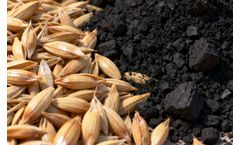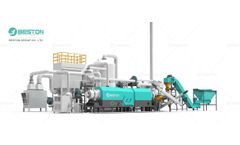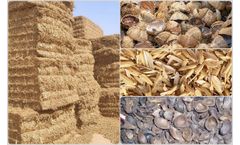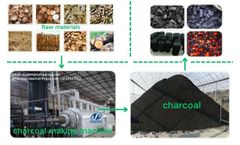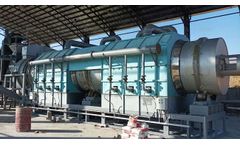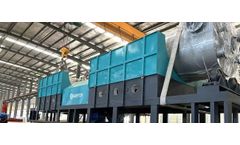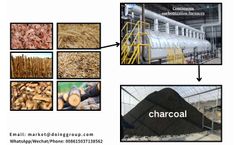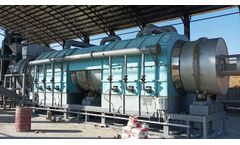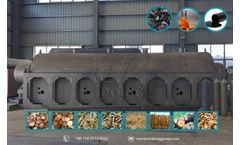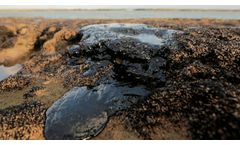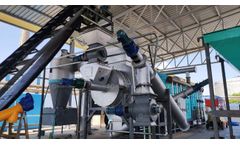Refine by
Biochar Articles & Analysis
319 articles found
Appropriate pretreatment not only improves carbonization efficiency but also helps enhance the quality and yield of the final biochar product. As a carbonization equipment manufacturer, we will introduce common pretreatment steps for rice husk carbonization to help you better prepare for carbonization and achieve higher production efficiency. 1. ...
Metallurgical Processes The metallurgical industry requires reducing agents and additives capable of withstanding high temperatures. Biochar produced by biochar pyrolysis equipment demonstrates significant utility in iron and steel production. ...
As the world searches for sustainable solutions to address climate change and soil degradation, biochar has emerged as a powerful tool. Produced through the carbonization of agricultural waste such as rice husks, wood chips, and crop residues, biochar offers both environmental and economic advantages. ...
This enables users to: Run pilot projects. Collect data on biochar yield. Test feedstock performance. Build proof-of-concept results before scaling up. 2. Carbon Sequestration Feasibility The biochar produced is rich in stable carbon compounds that resist decomposition for hundreds to thousands of years. ...
The best feedstock for biochar production depends on its availability, carbon content, and ease of processing. ...
High-quality machine-made charcoal offers a long burn time, high calorific value, and is smokeless and odorless. Charcoal, especially through biochar production and soil application, can act as a carbon sink and reduce atmospheric CO2, playing a role in achieving carbon neutrality. ...
This shift in consumer preference has opened the door for innovative, high-quality charcoal products—particularly biochar-based BBQ charcoal made from agricultural waste like coconut shells, wood chips, and bamboo. ...
At the forefront of this evolution is the biomass pyrolysis plant for sale, an industrial solution engineered to convert agricultural residues, forestry waste, and other organic materials into biochar—a stable, porous solid additive. Functionality of Biochar in Soil Amendment Biochar operates as a multifunctional additive, enhancing soil ...
Market Demand and Feedstock Economics Sawdust, a byproduct of woodworking industries, represents an abundant and underutilized resource. When converted into biochar or charcoal via pyrolysis, it becomes a marketable fuel source with applications in metallurgy, agriculture, and domestic heating. ...
This optimized process maximizes the conversion of raw biomass into high-quality biochar. Byproduct utilization In addition to biochar, pyrolysis also produces syngas and wood vinegar. ...
These features result in more uniform product quality—especially critical for downstream refining of pyrolytic oil or biochar. Advanced Thermal Management and Heat Recovery Modern reactor systems are engineered with multi-zone temperature control, allowing operators to fine-tune the thermal environment at different stages of the process. ...
The resulting charcoal is high in fixed carbon and low in ash, making it ideal for: Barbecue and grilling markets Activated carbon production Industrial fuel Agricultural biochar By converting shells into charcoal, coconut-producing regions are now able to generate new products with higher market value, reducing reliance on exports of raw coconuts or oil alone. ...
Volatile compounds are released and directed to a secondary combustion unit, while fixed carbon remains as biochar. Temperature stratification is essential. Primary thermal zones handle moisture evaporation, followed by devolatilization and carbon fixation. ...
These facilities, designed to convert organic materials into valuable byproducts like bio-oil, syngas, and biochar, are poised to play a crucial role in shaping the future of renewable energy and waste recycling. ...
By converting biomass into biochar, the system supports waste minimization strategies and aligns with the principles of a circular economy. ...
In the energy sector, it is used to produce charcoal and biochar, which can be utilized as renewable energy sources. In the chemical industry, it plays a vital role in the production of activated carbon, which is essential for water purification and air filtration. Additionally, the furnace can be employed in agricultural waste management, converting organic waste into valuable ...
This method is also known as pyrolysis and is applicable to various raw materials for producing biochar or charcoal, including but not limited to wood, fruit shells (such as coconut shells, palm shells), biomass waste (such as corn cobs, rice husks, straw, bamboo), etc. ...
Diversified applications, creating unlimited possibilities The biochar, biomass gas and biomass oil produced by DOING's carbonization equipment have broad application prospects. Biochar can be used as an efficient soil conditioner in agricultural production to improve soil fertility and crop yield; it can also be used as a high-quality fuel in industrial boilers ...
Furthermore, the solid carbon residue—often referred to as biochar—can be used as a soil amendment. Biochar has been shown to enhance soil aeration, retain moisture, and improve nutrient retention, which is particularly beneficial in soils affected by oil contamination. ...
By converting waste coconut shells into biochar, producers can not only reduce waste but also generate a high-value product that is in demand across several industries.The Biochar Production Process The process of producing biochar from waste coconut shells begins with the collection and preparation of the raw material. ...

